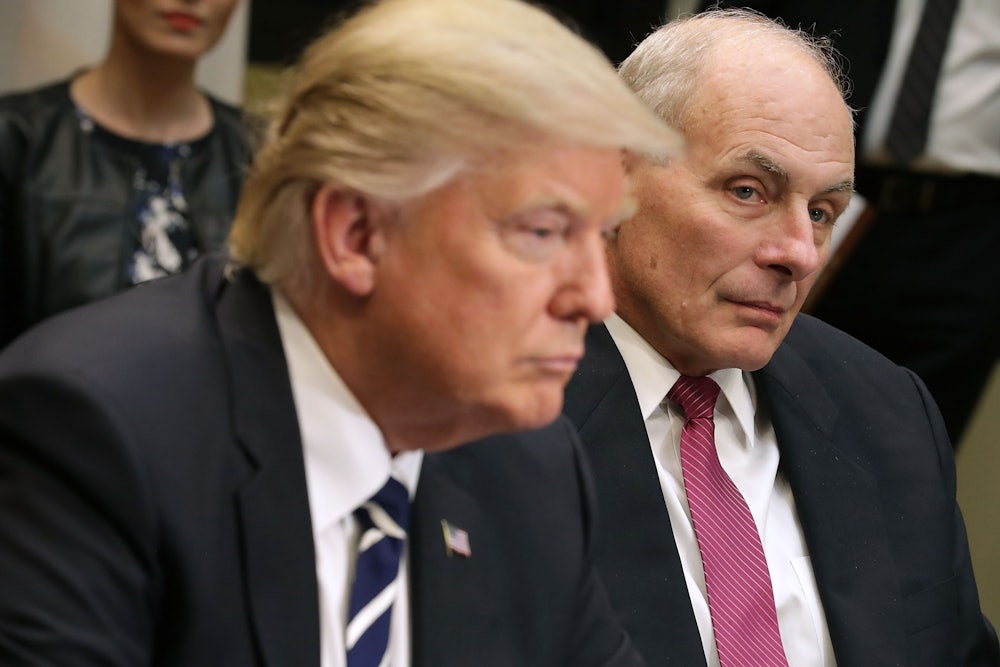President Donald Trump has long used Twitter to attack his political enemies, but early Thursday morning he tweeted against his own administration by criticizing the Foreign Intelligence Surveillance Act:
“House votes on controversial FISA ACT today.” This is the act that may have been used, with the help of the discredited and phony Dossier, to so badly surveil and abuse the Trump Campaign by the previous administration and others?
— Donald J. Trump (@realDonaldTrump) January 11, 2018
The White House supports FISA’s reauthorization. As Jonathan Chait of New York magazine notes, the administration “sent its highest-ranking security officials to lobby Congress for reauthorization, and reiterated its endorsement of the law as recently as last night.”
As often happens, Trump seems to have influenced by his preferred cable news network. Prior to Trump’s tweet, Fox News senior judicial analyst Andrew Napolitano had advocated against FISA reauthorization on Fox and Friends, one of the president’s favorite shows. Knowing that the commander-in-chief was likely to be watching, Napolitano turned to the camera and said, “Mr. President, this is not the way to go.”
During the segment, after claiming that Trump's "woes began" with "surveillance of him," Andrew Napolitano literally turns to the camera and says, "Mr. President, this is not the way to go." pic.twitter.com/W8NrtDDP3I
— Matthew Gertz (@MattGertz) January 11, 2018
Trump’s tweet perplexed Washington, especially members of his own party. As Axios reports, “Sources in GOP leadership were horrified by a tweet they consider wildly irresponsible given the national security stakes. Per a source close to Republican leaders: ‘I have decided that the only way to stay sane in Trump’s Washington is to ignore everything he says.’” Later on Thursday morning, likely due to pushback from Republicans, Trump posted a tweet that contradicted the first one:
With that being said, I have personally directed the fix to the unmasking process since taking office and today’s vote is about foreign surveillance of foreign bad guys on foreign land. We need it! Get smart!
— Donald J. Trump (@realDonaldTrump) January 11, 2018
This confusion is further proof that Trump often doesn’t even know his own administration’s policies. It comes just days after a White House meeting with congressional leaders where Trump agreed with Democratic Senator Dianne Feinstein about the need for a clean DACA bill—until he was reminded by House Majority Leader Kevin McCarthy that this is not what Republicans stand for.
Here's the incredible moment where Trump initially agrees to Feinstein's suggestion that they do a clean DACA bill, before being corrected by Republicans about what she was actually suggesting. pic.twitter.com/RaXAQAi8JF
— David Mack (@davidmackau) January 9, 2018
Incidences such as this speak to the strange state of affairs where America has two presidencies at once. First, there is the nominal or figurehead presidency of Trump, on display on Twitter, at rallies, and in other public interactions. But there is also the hidden presidency, likely under the control of chief of staff John Kelly, which sets actual policy. And these two presidencies are frequently at odds with each other.
The New York Times’ David Brooks noted this two-faced presidency in a column earlier this week. “It’s almost as if there are two White Houses,” he wrote. “There’s the Potemkin White House, which we tend to focus on: Trump berserk in front of the TV, the lawyers working the Russian investigation and the press operation. Then there is the Invisible White House that you never hear about, which is getting more effective at managing around the distracted boss.”
The notion of Trump as a Potemkin president recalls theories early in his administration that he would be a figurehead president, with the real power being held Vice President Michael Pence, House Speaker Paul Ryan, erstwhile adviser Steve Bannon, or perhaps son-in-law Jared Kushner. But none of those men proved to be an effective puppet master. Kelly has come closest to occupying that role, as he seems to have brought a modicum of order to the White House’s day-to-day operations.
While Kelly may be pulling some strings, Trump is no puppet. He’s too willful and uncontrollable to be a true figurehead by repeating the lines he’s given. Instead, Trump is closer to a horror movie archetype: The ventriloquist dummy who has a mind of his own, and acts in ways that harm his supposed master.
Trump’s dual presidency is surprisingly resilient thus far. The Republicans’ modus vivendi is to ignore that Trump keeps saying strange things that are not in the script. As House Speaker Paul Ryan insisted to the press on Thursday, he doesn’t read Trump’s tweets:
Here's Paul Ryan saying he doesn't read Trump's tweets, isn't concerned about his fitness for the office, and is fine with the president being unaware of the White House's positions on key issues pic.twitter.com/aqfJ8JyFsG
— Aaron Rupar (@atrupar) January 11, 2018
But this two-faced presidency is inherently fragile. If the Democrats win one or both houses of Congress in the fall midterms, Trump won’t have the same political protection he gets from his fellow Republicans today. The Democrats will have every interest in exploiting the divisions between the president and his administration, creating further chaos in the White House and more confusion about what its official policies are.
The two-faced presidency is also ill-suited to respond to major crises. If there’s a major terrorist attack or another natural disaster, John Kelly’s White House might want to project calm and control, as other administrations have in the past. But Trump will continue to be the public face of the government, and may fire off reckless tweets based on something he saw on cable TV.
The two-faced presidency can only work as long as Republicans have the luxury of discounting Trump’s word. That luxury isn’t likely to last very long.
